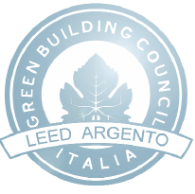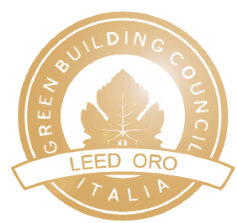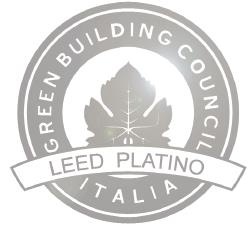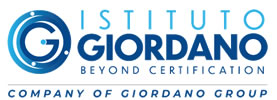Test SRI
(Pubbl. 29/03/2023)Tag:
optical tests
WHAT IS LEED?
The LEED certification system (Leadership in Energy and Environmental Design) is a standard that is applied in more than 100 Countries in the world and offers a global approach to sustainability, giving a recognition to virtuous performances in human and environmental health areas.
LEED standards, indicate the requirements in order to build sustainable buildings in the environment, both from energetic viewpoint, and the viewpoint of consumption of all environmental resources that are included in the realization process.
It can be considered as a voluntary system based on the agreement, design, construction and management of sustainable buildings with high performance and it is developing more and more internationally; it can be used on every type of building and promotes an integrated design system which regards the complete building.
Requirements are assembled in seven environmental categories, that imposes obligatory prerequisite and a number of environmental performances, that together define the final score of the building:
1. Historical Value (VS)
2. Site Sustainability (SS)
3. Waters Management (MW)
4. Energy and Atmosphere (EA)
5. Materials and Resources (MR)
6. Internal environmental Quality (QI)
7. Regional Priority
8. Innovation (IN)
Adding the credits earned within each of the seven categories, we obtain a specific certification level, that attests the performance reached by the building in terms of environmental sustainability.
Certification levels are four depending on the obtained level:
| BASE | (40-49 points) |
|
|
SILVER
|
(50-59 points)
|
 |
|
GOLD
|
(60-79 points)
|
 |
|
PLATINUM
|
(80 or more points)
|
 |
“HEAT ISLAND” EFFECT AND SRI
In this article we focus our attention on the “Site Sustainability (SS) – Heat Island Effect” and in particular on the reduction of the effects of local heat island that descend from external areas and buildings coverings according to Leed Italian New Construction Edition Manual and Renovation.
This effect consists of Increase of air temperature in a single region with lower temperature. A urban area is, compared to an adjacent rural area, a heat island, because the built surfaces, especially those with dark color, absorb more solar energy and they re-emit it as a thermal energy, with consequent raising temperature.
The nature and materials color used for the buildings construction, influence the heat island effect. The constant used to evaluate the materials contribution to heat island effect is the Solar Reflection Index (SRI).
SS CREDIT – REDUCTION OF HEAT ISLAND EFFECT
Values of solar reflectance “SR” and solar reflectance index “SRI” are relevant in order to obtain the credit, and these are minimum requirements:
EXTERNAL PAVED SURFACES AND COVERINGS
- External Flooring Use materials of flooring with a solar reflectance value “SR” equal to 0,28 after three years of aging. If it isn’t possible to find the value with an aged flooring, use materials with starting SR of at least 0,33. Furthermore, it’s important to develop other strategies about the site shading, the way to shade paved surfaces through the use of architectural coverings with a SR value of 0,28 after three years of aging. If it isn’t possible to find this value with an aged surface, use materials with starting SR of at least 0,33.
- High relflectance Coverings Use covering materials with an initial SRI index greater than or equal to values shown in the following table. In the same table are also indicated minimum values of SRI that have to be respected after three years of aging. If the three years value isn’t available, use materials that satisfy the starting values of SRI.
| Slope | Starting SRI | Three Years SRI | |
| Low slope Covering | ≤ 2:12 (15%) | 82 | 64 |
| High slope Covering | > 2:12 (15%) | 39 | 32 |
PARKING UNDER COVERING
Place at least the 75% of parking spaces under a covering. This cover must have a three years SRI index greater than 32. If the three years value isn’t available, use materials with an initial SRI greater than 39 at the time of installation.
ITALIAN LEGISLATION
At the Italian legislative level, through the decree of 23 Jane 2022 (GU n.183 of 6-8-2022), the Environment and Protection of the Territory and the sea Ministry has established the adoption of the minimum parameters for construction, thus aligning itself with environmental protection strategies that are already internationally widespread. For the SRI, in section 2.2.6 related to “Reduction of impact on the microclimate and atmospheric pollution”, for waterproof areas is provided the use of materials with high SRI as it follows:
- For external areas (for example: pedestrian paths, sidewalks, squares, cycle paths etc..) a SRI index ≥29.
- For coverings it has to be privileged the use of garden roof coverings (green); in case of non-green coverings, the used materials have to guarantee a SRI index of at least 29, in case of higher incline of 15%, and at least 76, for coverings with minor or the same incline to 15%.
THE SRI TEST (SOLAR REFLECTANCE INDEX)
The Optic laboratory of Istituto Giordano can effectuate the test for the purpose of the assessment of SRI. The SRI index, is a value of construction materials and it takes into account both the material capacity of reflect the solar radiation, and the capacity of emit solar radiation absorbed as a thermal radiation.
The solar reflectance and the emissivity of a material, measured in Istituto Giordano by a spectrophotometer UV-VIS-NIR and an emissometer accordingly to ASTM E 903 and ASTM G173 regulation; they allow to determine the stationary surface temperature (TS) reached by the material itself in specific environmental conditions of solar irradiation and ventilation (defined in the ASTM E1980-11 standard).
From the surface temperature value TS of the material, the SRI index is calculated :
SRI = 100 x (Tb-Ts)/(Tb-Tw)
Tb and Tw are the temperatures reached from a black reference surface (solar reflectance factor of 0,05 – emissivity of 0,9 – SRI = 0 in standard environmental conditions) and a white reference surface (solar reflectance factor 0,8 – emissivity 0,9 – SRI = 100 in standard environmental conditions) in the same environmental conditions for which is calculated the Ts.
The ASTM E1980-11 standard, prescribes to calculate the SRI index in the following environmental conditions:
- Sola radiation 1000 W/m2;
- Room temperature 37 °C (310 K);
- “Sky” temperature 27 °C (300K);
- Ventilation :
b) Medium (2÷6 m/s);
c) Strong (6÷10 m/s).
For how is defined the SRI, it has a value between 0 and 100 , even if they are possible negative or higher 100 values. More the index is high, more the surface exposed to solar irradiation will remain “fresh” (that is it will have a low raising of temperature).
COCLUSIONS
The competitive advantages for those who adopt the LEED standards, whether they are professionals or companies, can be identified above all in the big final quality of the product, in the considerable savings of management costs that these buildings allow to obtain when compared with traditional buildings and in the certification by third part.

For how is defined the SRI, it has a value between 0 and 100 , even if they are possible negative or higher 100 values. More the index is high, more the surface exposed to solar irradiation will remain “fresh” (that is it will have a low raising of temperature).
COCLUSIONS
The competitive advantages for those who adopt the LEED standards, whether they are professionals or companies, can be identified above all in the big final quality of the product, in the considerable savings of management costs that these buildings allow to obtain when compared with traditional buildings and in the certification by third part.

For information contact us:
Optic Laboratory, Dott. Andrea Cucchi
0541 322 329 - a.cucchi@giordano.it
















 Do you need more information about our services?
Do you need more information about our services?